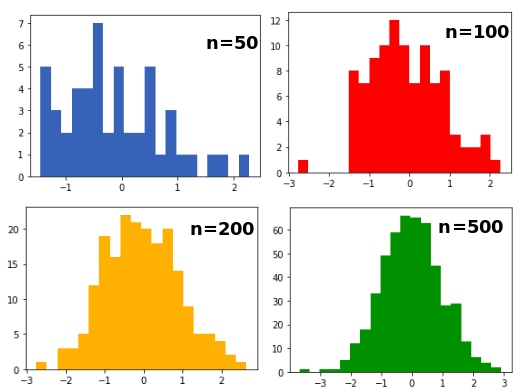Data analysis methods involve hypothesis testing and deciding confidence intervals. All statistical tests assume that the population is normally distributed. The central limit theorem is the core of hypothesis testing. According to this theorem, the sampling distribution approaches a normal distribution with an increase in the sample size. Also, the mean of the sample gets closer to the population means and the standard deviation of the sample gets reduced. This theorem is essential for working with inferential statistics, helping data analysts figure out how samples can be useful in getting insights about the population.
Does it provide answers to questions such as what size of sample should be taken or which sample size is an accurate representation of the population? You can understand this with the help of the following diagram:

In the preceding diagram, you can see four histograms for different-different sample sizes 50, 100, 200, and 500. If you observe...









































































